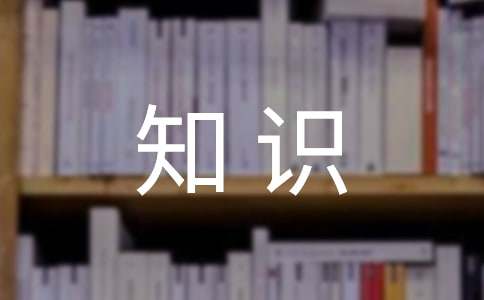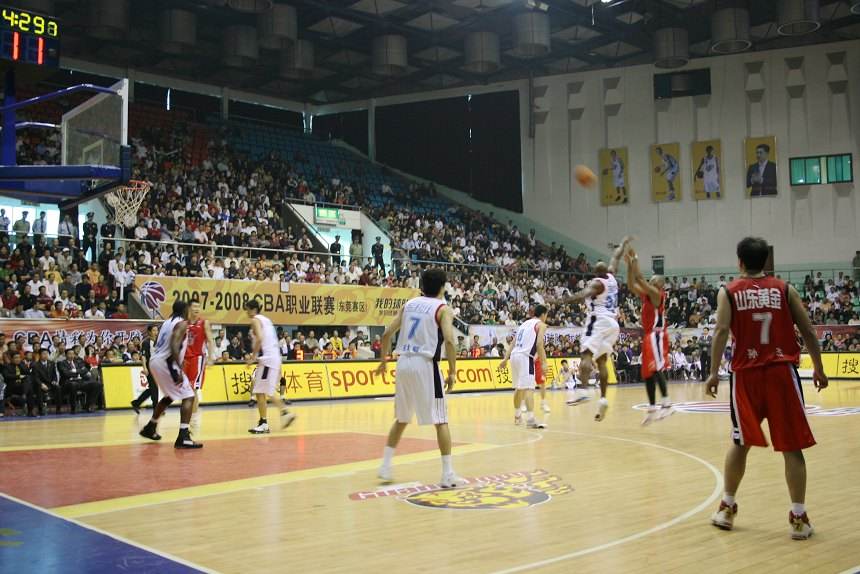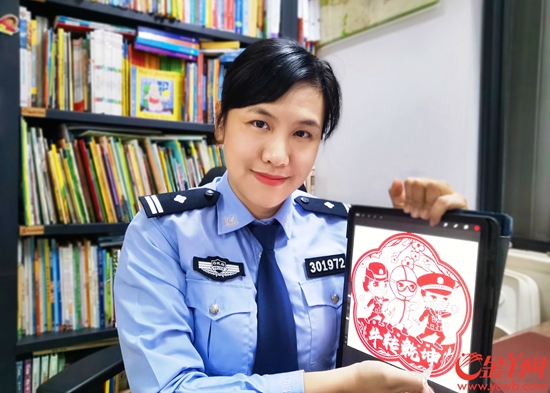英语语法及知识点
在我们的学习时代,是不是听到知识点,就立刻清醒了?知识点就是一些常考的内容,或者考试经常出题的地方。你知道哪些知识点是真正对我们有帮助的吗?以下是小编收集整理的英语语法及知识点,希望能够帮助到大家。

四年级英语语法知识点:一般过去时
1.一般过去时表示过去某个时间发生的动作或存在的状态,常和表示过去的时间状语连用。一般过去时也表示过去经常或反复发生的动作感谢。
2.Be动词在一般过去时中的变化:
⑴am和is在一般过去时中变为was(wasnot=wasn’t)
⑵are在一般过去时中变为were(werenot=weren’t)
⑶带有was或were的句子,其否定、疑问的变化和is,am,are一样,即否定句在was或were后加not,一般疑问句把was或were调到句首。
3.句中没有be动词的一般过去时的句子
否定句:didn’t+动词原形,如:Jimdidn’tgohomeyesterday.
一般疑问句:在句首加did,句子中的动词过去式变回原形。
如:DidJimgohomeyesterday?
特殊疑问句:
⑴疑问词+did+主语+动词原形?
如:WhatdidJimdoyesterday?
⑵疑问词当主语时:疑问词+动词过去式?
如:Whowenttohomeyesterday?
名词是:人名、地名、事物名、抽象概念的名称的词。
名词分为:专有名词和普通名词。
(一)专有名词有:人名、 地名、 国家名、 某国人、 语言名、
(Liming) (Beijing) (China、Japan) (Chinese、Japanese) (Chinese、)
星期、 月份、 节日名
(Sunday) (January) (New Year‘s Day)
专有名词的首写字母一定要大写,前面不能用冠词。
(二)普通名词有:可数名词和不可数名词
1.可数名词有:个体名词和集体名词。
可数名词单数(个体名词)=1,一般在名词前面加上冠词a/an。复数>1一般加“s”。
⊙语法重点 --名词变复数:
① 一般情况加s:地图maps;书包bags;老师teachers;橘子oranges;玫瑰roses;猫cats;床beds
“s”发音要注意:清对清,读/s/;浊对浊;读/z/;元音对浊音读/z/
/s、z、d?/后读/iz/
“ts”读/ts/;“ds”读/dz/
② 单词结尾是s、sh、ch、x + es、发音读/iz/:
女服务员们 穿着连衣裙 拿着玻璃杯 坐着公共汽车, 去上课。
waitress- dress- glass- bus- class-
盒子里走出几只狐狸,端着碟子,拿着刷子,戴着手表,吃着桃子来到海滩上,看教练 训鸵鸟。
box- fox- dish- brush- watch- peach- beach- coach- ostrich-
③ 以 o结尾分两种
1) 加es:黑人Negro- 英雄hero- 土豆potato- 西红柿tomato- 要加es
一句话语法 :英雄爱吃土豆、西红柿。
2)加s:
竹林边有 照相馆; 钢琴上有 收音机;动物园里有 袋鼠的 照片
bamboo- studio- piano- radio- zoo- kangaroo- photo-
④ 以 y结尾的分两种:
1)辅音字母加上y结尾的单词,把y变成i,再加es:
国家 城市有 工厂; 图书馆里有 词典; 婴儿 爱好听 故事
country- city- factory- library- dictionary- baby- hobby- story-
家庭 聚会吃 草莓。
family- party- strawberry-
1、动词be(is,am,are)的用法
我(I)用am,你(you)用are,is跟着他(he),她(she),它(it)。单数名词用is,复数名词全用are。变否定,更容易,be后not加上去。变疑问,往前提,句末问号莫丢弃。还有一条须注意,句首大写莫忘记。
2、this,that和it用法
(1)this和that是指示代词,it是人称代词。
(2)距离说话人近的人或物用this,距离说话人远的人或物用that。如:
This is a flower.这是一朵花。(近处)That is a tree.那是一棵树。(远处)
(3)放在一起的两样东西,先说this,后说that。如:
This is a pen. That is a pencil.这是一支钢笔。那是一支铅笔。
(4)向别人介绍某人时说This is…,不说That is…。如:
This is Helen. Helen, this is Tom.这是海伦,海伦,这是汤姆。
(5)This is不能缩写,而That is可以缩写。如:
This is a bike. That’s a car.这是一辆自行车。那是一辆轿车。
(6)打电话时,介绍自己用this,询问对方用that。如:
—Hello! Is that Miss Green?喂,是格林小姐吗?
—Yes, this is. Who’s that?是的,我是,你是谁?
注意:虽然汉语中使用“我”和“你”,但英语中打电话时绝不可以说:I am…, Are you…?/Who are you?
(7)在回答this或that作主语的疑问句时,要用it代替this或that。如:
①—Is this a notebook?这是笔记本吗?—Yes, it is.是的,它是。
②—What’s that?那是什么?—It’s a kite.是只风筝。
3、these和those用法
this, that, these和those是指示代词,these是this的复数形式,指时间,距离较近的或下面要提到的人或事;those是that的复数形式,指时间、距离较远或前面已经提到过的人或事物。
①This is my bed. That is Lily’s bed.这是我的床。那是莉莉的床。
②These pictures are good.那些画很好。
③ Are those apple trees?那些是苹果树吗?
在回答主语是these或those的疑问句时,通常用they代替these或those以避免重复。如:
④Are these/those your apples?这些(那些)是你的苹果吗?
Yes, they are.是的,他们是。
4、名词+’s所有格
单数名词后直接加“ ’s ”:
Jim’s coat吉姆的外套Jeff’s mother杰夫的妈妈
’以s结尾的复数名词,只加“”
Teachers’ Day教师节the twins’ books双胞胎的书
不以s结尾的不规则的名词复数,加“ ’s ”
Children’s Day儿童节men’s shoes男式鞋
表示两者共同拥有时,只在最后一个名词后加’s
Lucy and Lily’s mother露茜和莉莉的妈妈(共同的妈妈,一个妈妈)
表示两者各自拥有时,要在每个名词后加’s
Lucy’s and Kate’s rooms露茜和凯特的房间(各自的房间,两间房子)
5、There be句型
(1)There be句型主要用以表达“某处(某时)有某人(某物)。”其基本结构为“There be+某物(某人)+某地(某时)”其中there是引导词,没有词义;主语是be后面的名词,be是谓语动词,在一般现在时中be只用is和are两种形式。下面这首歌诀可帮你巧记there be句型结构:
There is a book on the desk.There be放句首,主语跟在后。地、时放句末,强调置前头。
On the desk there is a book.有时为了强调地点,也可把介词短语放在句首。如:
(2)There be句型中的be动词如何确定呢?请先看看下面这首歌诀:
Be动词,有三个,am,is还有are。“There be”真特别,不留am只留俩,那就是is还有are。要用is还是are,须看其后的名词是单数还是复数。若是单数或不可数名词用is,否则就用are。如:
①There is a tree behind the house.
②There is some water(水)in the bottle(瓶子).
③There are some pears in the box.
(3)注意:如果“be”后的主语是由and连接的两个或两个以上的名词,那么be的形式要遵循“远亲不如近邻”的原则。也就是说,“be”的形式是由与它最近的那个名词来确定的。若那个名词是单数或不可数名词要用is,是复数就用are。如:
①There is a book and some pens on the floor.
②There are some pens and a book on the floor.
6、like一词的用法
like用作及物动词,译为“喜欢”。
(1)后接名词或代词,表示喜欢某人或某物。如:
I like the baby very much.我非常喜欢这个小孩。
(2)后接动名词(v. -ing),表示“喜欢做某事”,着重于习惯、爱好。如:
Tom likes playing football.汤姆喜欢踢足球。
(3)后接动词不定式(to do),表示“偶尔地喜欢做某事”,着重于某次具体的行为。如:
I like reading, but I like to watch TV this evening.我喜欢读书,但我今晚想看电视。
7、句子单数变复数,注意以下五要素
(1)主格人称代词要变成相应的复数主格人称代词,即I→we, you→you,she,he,it→ they。
She is a girl. →They are girls.如:
I’m a student. →We are students.
(2)am,is要变为are。如:
He is a boy. →They are boys.
(3)不定冠词a,an要去掉。如:
It is an apple. →They are apples.
(4)普通单数名词要变为复数形式。如:
This is a box. →These are boxes.
8、英语日期的表示法
英语中月份和星期名称都是专有名词,它们的首字母必须大写,并且前面无需用冠词。
用英语表示日期,其顺序为月+日+年,日和年之间需用逗号隔开。如:August 2nd,20xx(20xx年8月2日)。也可以用日+月+年来表示。如:10th May,20xx(20xx年5月10日)英语日期前介词的使用:若指在哪一年或哪一月,则用介词in,若具体到某一天,则需用介词on。
9、时间的表达法
(1)直读式,即直接读出时间数字
7: 05 seven five 8:16 eight sixteen
(2)过、差式,即几点差几分,几点过几分。(以30分为分界线)
1:25 twenty-five past one 2:30 half past two 3:43 seventeen to four 4:38 twenty-two to five
(3)12小时制
6:00 a.m.上午6点8:20 p.m.下午8点20分
(4)24小时制
13:00 13点钟22:15 22点15分
(5)15分可用quarter 4:15 a quarter past four 5:45 a quarter to six
(6)时间前通常用at.
at 5 o’clock at 7:30 p.m.
10、want用法
(1)想干什么用want to do sth
They want to join the sports club.他们想加入运动俱乐部。
(2)第三人称单数作主语,want要作变化
①He wants to play basketball.
②Li Xia wants to play the piano.
(3)变疑问句,否定句要借助助动词do或does.
①-Do you want to play soccer ball ?-Yes , I do . / No , I don’t.
②-Does he want to go home by bus ?-Yes , he does . / No , he doesn’t
二、初一英语易错知识点归类例析
英语有很多很细小的知识点,而这些细小的知识点往往就是考点。同学们很容易由于注意不到而犯错误,下面就初一年级同学们比较容易犯错误的知识点做一个汇总。
[第一类]名词类
1、这些女老师们在干什么?
[误] What are the woman teachers doing?
[正] What are the women teachers doing?
[析]在英语中,当一名词作定语修饰另一名词(单或复数形式)时,作定语的名词一般要用其单数形式;但当man,woman作定语修饰可数名词复数形式时,要用其复数形式men,women.
2、房间里有多少人?
[误] How many peoples are there in the room?
[正] How many people are there in the room?
[析] people作“人、人们”解时,是个集合名词,其单复数同形。
3、我想为我儿子买两瓶牛奶。
[误] I want to buy two bottle of milk for my son.
[正] I want to buy two bottles of milk for my son.
[析]表示不可数名词的数量时,常用“a / an或数词+表量的可数名词+ of +不可数名词”这一结构,其中当数词大于1时,表量的可数名词要用其复数形式。
[第二类]动词类
4、你妹妹通常什么时候去上学?
[误] What time does your sister usually goes to school?
[正] What time does your sister usually go to school?
[析]借助助动词do(或does)构成疑问句或否定句时,句中的谓语动词用其原形。
5、琳达晚上经常做作业,但今晚她在看电视。
[误] Linda often do her homework in the evening,but this evening she watching TV. [正] Linda often does her homework in the evening,but this evening she is watching TV.
[析]在初一英语学习阶段,我们接触到了两种主要时态:一般现在时和现在进行时。一般现在时表示经常的或习惯性的动作,常和often,usually,sometimes等时间状语连用。在一般现在时的句子中,若主语是第三人称单数,谓语动词要用其第三人称单数形式。现在进行时表示现阶段正在进行或发生的动作,现在进行时由be(am / is / are)+ ving形式构成。
6、这双鞋是红色的。
[误] This pair of shoes are red.
[正] This pair of shoes is red.
[析]在shoes,trousers,gloves,glasses等表示成双成对的衣物或工具名词前用pair(表计量)修饰时,谓语动词的形式由pair的单复数形式来决定。
[第三类]代词类
7、这张票是她的,不是我的。
[误] This is hers ticket. It’s not my.
[正] This is her ticket. It’s not mine.
[析]物主代词有形容词性物主代词和名词性物主代词之分。形容词性物主代词之后一定要接名词,而名词性物主代词之后不需接任何词。
8、吴老师教我们英语。
[误] Miss Wu teaches our English. [正] Miss Wu teaches us English.
[析] teach sb. sth.中的sb.作teach的宾语,因此当sb.为人称代词时要用其宾格形式。
[第四类]介词类
9、你能找到这个问题的答案吗?
[误] Can you find the answer of this question?
[正] Can you find the answer to this question?
[析]英语中用“the answer to …”表示“……的答案”。类似结构还有the key to the door,the way to the zoo等。
10、格林先生星期六上午来这里。
[误] Mr Green will come here in Sunday evening.
[正] Mr Green will come here on Sunday evening.
[析]表示在上午、下午等时,介词要用in;而表示在具体的某天上午、下午时,介词要用on.
11、那个穿着红裙子的小女孩是我们老师的女儿。
[误] That little girl on a red skirt is our teacher’s daughter.
[正] That little girl in a red skirt is our teacher’s daughter.
[析]用介词表示“穿戴衣物”时,只能用in,其他介词没有此用法。
[第五类]副词类
12、莉莉,你为什么不回家呢?
[误] Lily,why don’t you go to home?[正] Lily,why don’t you go home?
[析] come,go等后接here,there,home等地点副词时,地点副词前不加to。
[第六类]连词类
13、我喜欢语文和英语,但我不喜欢体育和历史。
[误] I like Chinese and English,but I don’t like P.E.and history.
[正] I like Chinese and English,but I don’t like P.E.or history.
[析]在肯定句中并列成分之间用and来连接;而在否定句中,并列成分之间的连接需用or。
[第七类]冠词类
14、乘飞机去北京花了史密斯一家人一个小时。
[误] It takes Smiths a hour to go to Beijing by a plane.
[正] It takes the Smiths an hour to go to Beijing by plane.
[析]
1、表示“……一家人”用结构“the +姓氏复数”;
2、our一词的第一个字母不发音,它是以元音音素开头的,所以“一小时”要用an hour;
3、用介词by表示“乘坐”某种交通工具时,交通工具名词前不加任何冠词。
[第八类]句法类
15、――你不是学生吗?――不,我是学生。
[误] ――Aren’t you a student?――No,I am.
[正] ――Aren’t you a student?――Yes,I am.
[析]对否定疑问句的回答是用Yes还是用No,这取决于实际情况:如果事实是肯定的,就用Yes表“不”;如果事实是否定的,就用No表“是的”。
(1).一般情况下,直接加-s,如:book-books, bag-bags, cat-cats, bed-beds
(2).以s. x. sh. ch结尾,加-es,如:bus-buses, box-boxes, brush-brushes, watch-watches
(3).以"辅音字母+y"结尾,变y为i, 再加-es,如:family-families, strawberry-strawberries
(4).以"f或fe"结尾,变f或fe为v, 再加-es,如:knife-knives
(5)不规则名词复数: man ---men, woman---women, policeman---policemen, policewoman---policewomen, mouse---mice child---children foot---feet,.tooth---teeth fish---fish, people---people, Chinese---Chinese, Japanese---Japanese
1. 主格一般用在句中作为主语,一般用在动词前(除疑问句)
2. 宾格多用于动词介词后面。
3. 形容词性物主代词后面必须要跟名词。
4. 名次性物主代词=形容词性物主代词+名词
不定代词:凡不是用来指明代替任何特定名词的'代词叫做不定代词。不定代词代替名词或形容词.在句中可用作主语,宾语,表语和定语。不定代词包括:
some,any,no,every
-thing:something,anything,nothing,everything
-one:someone,anyone,anything,everyone
-where:somewhere,anywhere,anywhere,everywhere
-body:somebody,anybody,nobody,everybody
例子:
1)Help!Somebody?Anybody?
2)Where did you go?I went nowhere.
3)Nobody is athome.
4)You are really something.
5)I looked for my book everywhere,but I cant find it anywhere.
6)If you want to go somewhere,if you want to be someone,you must wake up.
7)Since everybody is here,lets begin our class.
1.一般过去时表示过去某个时间发生的动作或存在的状态,常和表示过去的时间状语连用。一般过去时也表示过去经常或反复发生的动作感谢。
2.Be动词在一般过去时中的变化: ⑴am 和is在一般过去时中变为was。(was not=wasn't) ⑵are在一般过去时中变为were。(were not=weren't) ⑶带有was或were的句子,其否定、疑问的变化和is, am, are一样,即否定句在was或were后加not,一般疑问句把was或were调到句首。
3.句中没有be动词的一般过去时的句子 否定句:didn't +动词原形,如:Jim didn't go home yesterday. 一般疑问句:在句首加did,句子中的动词过去式变回原形。如:Did Jim go home yesterday? 特殊疑问句: ⑴疑问词+did+主语+动词原形?如: What did Jim do yesterday? ⑵疑问词当主语时:疑问词+动词过去式?如:Who went to home yesterday?
动词过去式变化规则:
1.一般在动词末尾加-ed,如:pull-pulled, cook-cooked
2.结尾是e加d,如:taste-tasted
3.末尾只有一个元音字母和一个辅音字母的重读闭音节,应双写末尾的辅音字母,再加-ed,如:stop-stopped
4.以“辅音字母+y”结尾的,变y为i, 再加-ed,如:study-studied
5.不规则动词过去式: am,is-was, are-were, do-did, see-saw, say-said, give-gave, get-got, go-went, come-came, have-had, eat-ate, take-took, run-ran, sing-sang, put-put, make-made, read-read, write-wrote, draw-drew, drink-drank, fly-flew, ride-rode, speak-spoke, sweep-swept, swim-swam, sit-sat
比较need和dare
这两词既可做实义动词用,又可做情态动词用。作为情态动词,两者都只能用于疑问句,否定句和条件句。 need 作实义动词时后面的不定式必须带to,而dare作实义动词用时, 后面的to 时常可以被省略。
1) 实义动词: need(需要, 要求) need + n. / to do sth
2) 情态动词: need,只用原形need后加do,否定形式为need not。
Need you go yet?
Yes, I must. / No, I needn't.
3) need 的被动含义:need, want, require, worth(形容词)后面接doing也可以表示被动:
need doing = need to be done
四则运算:
1)加法:在口语中,小数目的加法常用and代表“+”,is或are代表“=”。
在正式的场合或较大数目的加法用plus代表“+”,equals或is代表“=”。
7+4=11 Seven and four is/are eleven.
13+12=25 Thirteen plus twelve equals/is twenty-five.
2)减法:在口语中,小数目的减法用“Take away +减数+ from +被减数+ and you get +余数”
“减数+ from +被减数+ leaves/is +余数”
在正式的场合或较大数目的减法用minus代表“—”,equals代表“=”。
12-5=7 Five from twelve leaves/is seven. /Take away five from twelve and you get seven.
21-7=14 Twenty-one minus seven equals fourteen.
3)乘法:在口语中,小数目的乘法的乘数用复数形式,用are代表“=”。
大数目的乘法用times代表“×”,is/makes代表“=”。
在正式的场合下用multiplied by代表“×”,equals代表“=”。
4×5=20 Four fives are twenty
326×238=77588
Three hundred and twenty-six times two hundred and thirty-eight is/makes seventy-seven thousand five hundred and eighty-eight.
Three hundred and twenty-six multiplied by two hundred and thirty-eight equals seventy-seven thousand five hundred and eighty-eight.
4)除法:小数目的除法:用divided by代表“÷”,equals代表“=”。
“被除数+ divided by +除数+ equals +商”;“除数+ into +被除数+ goes +商”
32÷4=8 Thirty-two divided by four equals eight.
Four into thirty-two goes eight.
大数目的除法:用divided by代表“÷”,equals代表“=”。
216÷8=27
Two hundred and sixteen divided by eight equals twenty-seven.


版权声明
本文仅代表作者观点,不代表xx立场。
本文系作者授权xxx发表,未经许可,不得转载。






发表评论